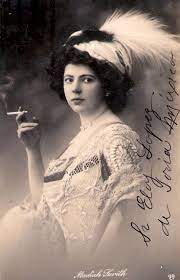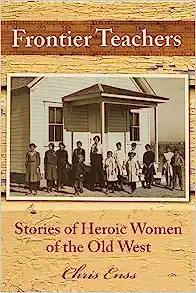Enter now to win a copy of
Frontier Teachers: Stories of Heroic Women of the Old West

Walk into any saloon in the mid-1800s and chances were good a thick cloud of cigarette smoke stood between patrons and the bar. Smoking was prevalent in the Old West. It’s hard to imagine a cowboy on the trail without a cigarette in his hand or a wad of chewing tobacco in his mouth.
The effects of tobacco have been a topic of discussion among physicians since 1888 when Doctor Robert Koch, the leading authority on infectious diseases at the time, argued that the spitting of chewing tobacco was leading to a spread of tuberculosis.
A quartet of doctors from Dartmouth and Harvard weighed in on the subject of cigarette smoking in 1889. According to the October 4, 1889, edition of the Monroe Daily Independent physicians studying the proliferation of smoking in locations such as San Francisco, California and Denver, Colorado determined that “tobacco should be used moderately, if used at all.” The four doctors involved in the study concluded that laborers and artisans could smoke all they want without injury, but that “brain-workers” exposed themselves to the risk of nervous collapse if they indulged in more than one cigarette a day. The reasoning was that the life of a “brain-worker” tended to be sedentary and therefore their internal organs were not as strong as those who earned a living working with their hands. Laborers were sturdy individuals whose heart could withstand the strain.
The physicians all agreed that the habit of smoking tobacco was a very pernicious one if indulged in by boys. “A complication of nervous disorders is produced by excessive tobacco smoking and boys ought not to smoke,” the doctors concluded in their findings. “Many boys started smoking when they were eleven or twelve years old. They began by picking up their father’s half-smoked cigar or by stealing his tobacco. When these boys come to be seventeen or eighteen years of age they are thin, pale-faced, short and their vitality is seriously impaired.”
In 1905, Doctor Sara B. Chase spoke to the issue of women smokers. “Tobacco in any shape has no good qualities at all in it for women. I found that women not only smoke, but chew tobacco. Many of the women that smoke today are teachers. The most injurious form of smoking is cigarettes. It is the most injurious because tobacco is put right into the mouth and the nicotine poison in the tobacco is absorbed that way through the paper.”
The physician’s study concluded with the following warning, “A man would be a great deal better off if he would let tobacco alone. I know he would have more money because it is an expensive habit. Exactly how much nicotine is needed to poison a man is not known. A man who is a heavy smoker would probably require much more nicotine to poison him than a man who doesn’t smoke at all or one of nervous temperament.”
The results of numerous other studies would be posted in newspapers throughout the Old West from 1888 to 1912, but it didn’t stop a cowboy from rolling his own cigarette in corn shucks and smoking.


